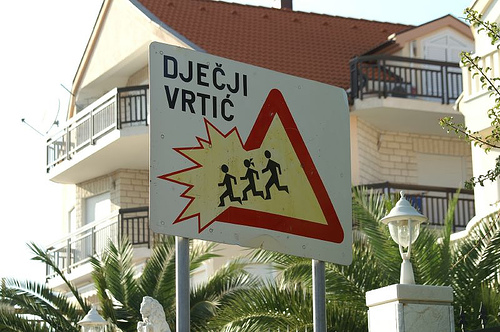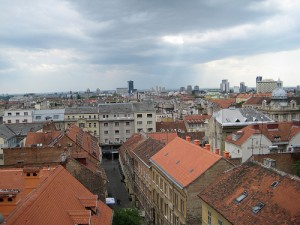 While most travelers head straight for the Dalmatian coast, capital city Zagreb has a lot to offer for those who want to experience authentic Croatian culture. With several museums, parks, and arguably Europe’s most beautiful cemetery, Zagreb is well worth a few days of exploring. The city is situated between the southern slopes of the Medvednica mountain and both the northern and southern bank of the Sava river. Wander through the open-air market with a coffee in hand and take in the beauty of Zagreb’s medieval architecture and rich history.
While most travelers head straight for the Dalmatian coast, capital city Zagreb has a lot to offer for those who want to experience authentic Croatian culture. With several museums, parks, and arguably Europe’s most beautiful cemetery, Zagreb is well worth a few days of exploring. The city is situated between the southern slopes of the Medvednica mountain and both the northern and southern bank of the Sava river. Wander through the open-air market with a coffee in hand and take in the beauty of Zagreb’s medieval architecture and rich history.
Maksimir Park
Zagreb is full of wonderful wooded enclaves to explore. One such location is Maksimir Park, which was opened in 1794 and is landscaped similar to an English garden park, complete with artificial lakes and alleys. The park’s most popular attractions are the Bellevue Pavilion, which was constructed in 1843, and the Echo Pavilion, which resembles a rustic Swiss cottage.
Zagreb’s Botanical Garden
For a nice change of pace, wander through Zagreb’s botanical garden, which was created in 1890. With 10,000 species of plants and little bodies of water, you can easily spend a few hours walking in the shade.
Mirogoj historical cemetery
Though not quite a park, Mirogoj is one of the most beautiful cemeteries in Europe. Designed by Herman Bollé, one of Croatia’s finest architects, the cemetery features several cupolas and paths mingled with sculptures and impressive tombs. Inside, the cemetery is lush, green and eerily quiet. It’s definitely worth the ten-minute bus ride.
The Medieval fortress of Medvedgrad
Another site worth checking out is the Medvedgrad fortress, on the southern side of Mt Medvednica. Zagreb’s most treasured medieval monument, Medvedgrad was built from 1249 to 1254 to protect the city from Tartar invasions.
Zagreb Cathedral
Not to be missed is Zageb’s most famous building, the Cathedral. First built in the 11th century, Zagreb Cathedral was destroyed by the Tatars in 1242 and subsequently rebuilt by Hermann Bollé, the same architect who designed the Mirogoj cemetery. You can easily wander over the cathedral from the Dolac market.
Museums
Zagreb is home to a variety of historical, cultural and art museums. Not to miss is the Mimara Museum, which was founded with a donation from Ante “Mimara” Topić. Comprising more than 1500 exhibits, the museum features works by Lorenzetti, Cravaggio, Raffaello and Rembrandt. Other museums worth a visit include the Archeological Museum, the Museum of Contemporary Art, and the Croatian Museum of Naïve Art.
Market
Zagreb’s impressive fruit and vegetable market is found in the Dolac quarter. The farmers’ market is the most visited and the best-known farmer’s market in Zagreb, famous for its combination of traditional open market with stalls and a sheltered market below. Located only steps away from the main city square, Ban Jelačić Square, and in the middle between the oldest parts of Zagreb, Dolac is a great place to grab breakfast or coffee and to satisfy cravings for fresh produce. While you’re there, be sure to pick up a Croaterra, an authentic Croatian cake made of organic and whole grain ingredients.
Nightlife
Much like in Italy, outdoor restaurants are good places to start the evening’s entertainment. Tkalcicev Street in Gornji Grad boasts the city’s highest concentration of bars and cafes, which are perfect for people-watching and dining. The Gradska Kavana and Lisna Kavana are both relaxing café bars and are perfect for the night’s first few drinks and to sit and talk.
Along the same street is Oliver Twist, “the place to see and be seen” in Zagreb. This trendy bar offers a wide selection of local and imported beers served on two levels and on an outdoor terrace. The Bulldog Belgian Beer Café is popular with both tourists and locals. It has a huge outdoor area, which is always packed practically any night of the week. The Belgian beer is excellent and as a result, the Bulldog is the destination of choice for many Stag parties. Middle Earth fans will especially appreciate Tolkien’s pub, one of the quirkier places in Zagreb. Decorated with images from the author’s famous books, the pub is a cozy establishment and offers a talking point for strangers to get to know each other. Who doesn’t love LOTR?
In the warmer months, the liveliest parties are found at Jarun Lake, a recreational area where people go to drink and dance (some of the clubs shut down for the summer, as many locals go and visit the Islands). Two of the most popular nightclubs in Zagreb, Aquarius and Piranha, can be found here. A tram ride away, Jarun Lake also has cafes, restaurants, a nude beach, sailing, rowing, windsurfing and bike rentals, so it may be a great place to spend the day (as well as the night
Day trips
Zagreb’s central location offers travelers several options for daily excursions. Samobor is a charming medieval town with well preserved old stores, beautiful parks and hiking trails. The Baroque architecture is picturesque against the wooded hills. Samobor is accessible by car or bus, and be sure to try the ice coffee, which is more like a milkshake.
Vrbovec, east of Zagreb, is another town travelers might want to explore. Vrbovec is famous for cooking old Croatian specialties and a quaint example of authentic Croatian culture. Travelers say that once you come to Vrbovec, you’ll feel like you’re at home.
Lastly, visitors might want to wander around ancient castle ruins, which are situated surprisingly close to the city itself. Escape for a few hours into medieval history.
photo by phillipshannon on Flickr
 Croatia has been on the tourist radar for some years, but despite the alluring pictures of stunning blue waters, beautiful beaches, and Roman ruins it still hasn’t been completely overrun by people visiting on a European tour. There’s every reason to include Croatia on your next trip to Europe – the great bargains being only one – that it’s frankly a little surprising that more travelers don’t visit Croatia each year.
Croatia has been on the tourist radar for some years, but despite the alluring pictures of stunning blue waters, beautiful beaches, and Roman ruins it still hasn’t been completely overrun by people visiting on a European tour. There’s every reason to include Croatia on your next trip to Europe – the great bargains being only one – that it’s frankly a little surprising that more travelers don’t visit Croatia each year.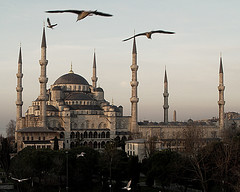
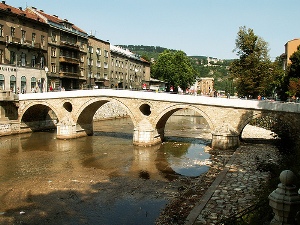 Croatia is one of the very popular countries among the Europeans looking for a cheap beach getaway. But if you want to try something different, why not plan to explore one of the
Croatia is one of the very popular countries among the Europeans looking for a cheap beach getaway. But if you want to try something different, why not plan to explore one of the 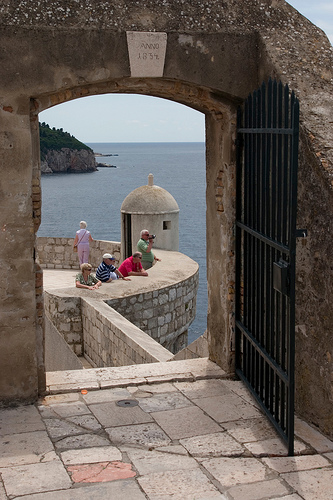 Ah, Dubrovnik. Adored by people like John Malkovitch, the king of Jordan and the late Pope John Paul II, this “jewel of the Adriatic” is Eastern Europe’s Venice, minus the flooding. The southern-most city in Croatia, Dubrovnik was one of the centers of the development of language and literature and was home to many famous poets, playwrights, painters, mathematicians and other scholars. Its gorgeous old town became a UNESCO World Heritage site in 1979, and its charm has attracted tourists who want a taste of the Mediterranean without the crowds of Greece and Italy.
Ah, Dubrovnik. Adored by people like John Malkovitch, the king of Jordan and the late Pope John Paul II, this “jewel of the Adriatic” is Eastern Europe’s Venice, minus the flooding. The southern-most city in Croatia, Dubrovnik was one of the centers of the development of language and literature and was home to many famous poets, playwrights, painters, mathematicians and other scholars. Its gorgeous old town became a UNESCO World Heritage site in 1979, and its charm has attracted tourists who want a taste of the Mediterranean without the crowds of Greece and Italy.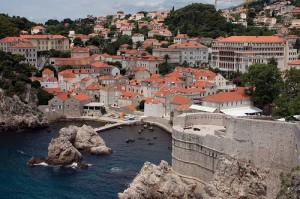 Designed by Onofrio della Cava –who also designed Onofrio’s fountain—the Rector’s palace has not had the smoothest of histories. The original building was completely destroyed in 1435 by a gunpowder explosion. The second floor of the rebuilt palace was again destroyed by another explosion in 1463, and the entire building suffered more damage from the earthquake. As a result, the building has acquired various styles and designers over the centuries.
Designed by Onofrio della Cava –who also designed Onofrio’s fountain—the Rector’s palace has not had the smoothest of histories. The original building was completely destroyed in 1435 by a gunpowder explosion. The second floor of the rebuilt palace was again destroyed by another explosion in 1463, and the entire building suffered more damage from the earthquake. As a result, the building has acquired various styles and designers over the centuries. While most travelers head straight for the Dalmatian coast, capital city Zagreb has a lot to offer for those who want to experience authentic Croatian culture. With several museums, parks, and arguably Europe’s most beautiful cemetery, Zagreb is well worth a few days of exploring. The city is situated between the southern slopes of the Medvednica mountain and both the northern and southern bank of the Sava river. Wander through the open-air market with a coffee in hand and take in the beauty of Zagreb’s medieval architecture and rich history.
While most travelers head straight for the Dalmatian coast, capital city Zagreb has a lot to offer for those who want to experience authentic Croatian culture. With several museums, parks, and arguably Europe’s most beautiful cemetery, Zagreb is well worth a few days of exploring. The city is situated between the southern slopes of the Medvednica mountain and both the northern and southern bank of the Sava river. Wander through the open-air market with a coffee in hand and take in the beauty of Zagreb’s medieval architecture and rich history.